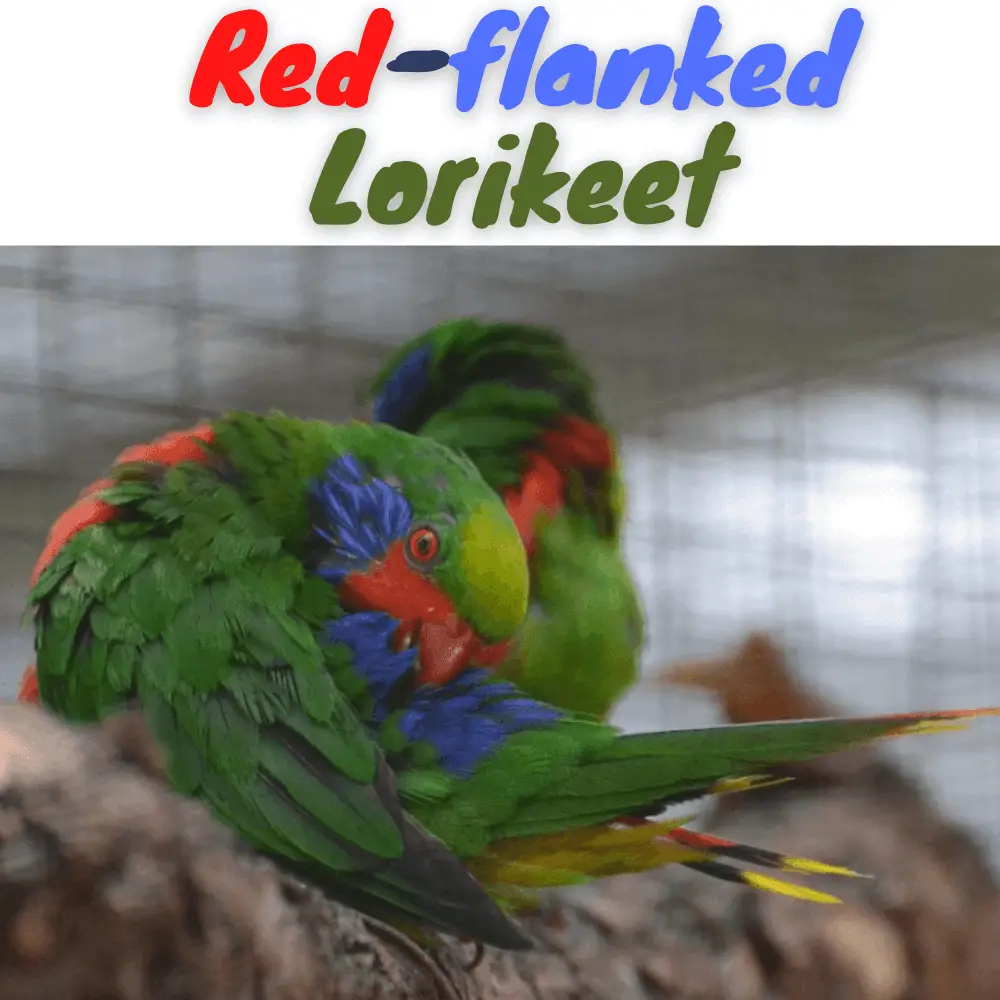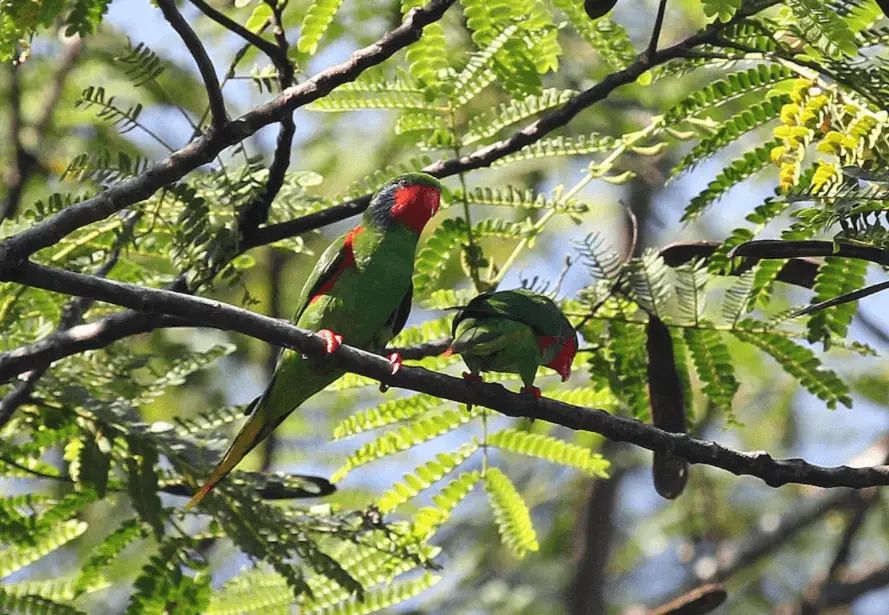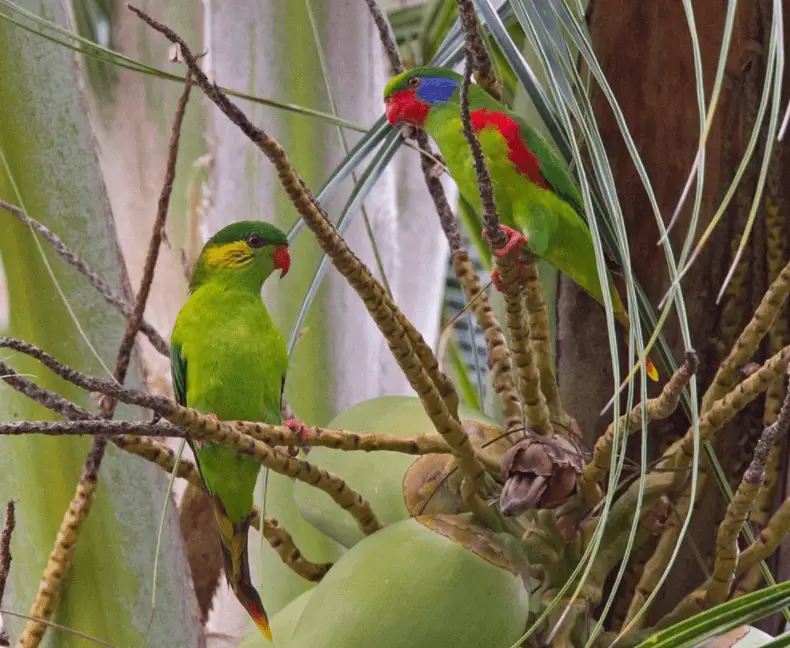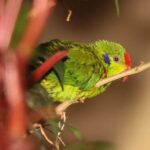
Red-flanked Lorikeet 15–17 cm; 25–48 g. Generally green, yellowish on forecrown facial patch red, ear-coverts blue, sides of breast, flanks and underwing-coverts red, with a yellow band across the underside of flight-feathers;
rump patch dark blue; tail green above, broadly tipped yellow and with subterminal red area in the center, yellow below; bill red, legs orange-red.
Red-flanked Lorikeet Female lacks red and blue and has ear-coverts bluish black-streaked yellow and a green forehead. Immature like a female, but the male has some red.
Race intensiorslightly larger, darker blue on rump; ornate has more extensive red on the throat, and is slightly darker green, with larger blue rump; subplacens without blue rump; pallid or like previous race but paler and perhaps brighter.
Systematics History
Editor’s Note: This article requires further editing work to merge existing content into the appropriate Subspecies sections. Please bear with us while this update takes place.

Red-flanked Lorikeet
Proposed race occidentalis (from Ambelau I, off SE Buru) included in nominate. Five subspecies were recognized.
Subspecies
Hypocharmosyna placentis intensior Scientific name definitions
Distribution
Hypocharmosyna placentis placentis Scientific name definitions
Distribution
Hypocharmosyna placentis ornata Scientific name definitions
Distribution
Hypocharmosyna placentis subplacens Scientific name definitions
Distribution
Hypocharmosyna placentis pallidior Scientific name definitions
Distribution
Habitat
Forest, especially mangroves; also savanna woodland, tall secondary growth, coastal Casuarina groves, coconut and sago plantations, riverside palm and eucalypts, and open cultivated areas.
Generally reported from lowlands, below 250 m in Halmahera and Kai Is, with some records up to 1400 m; however, recently found up to 800 m on Halmahera, with highest densities above 700 m.
Movement
Observations on Halmahera suggest birds apparently travel long distances in search of flowers.
Diet and Foraging
Apparently mainly or exclusively flowers and their nectar and pollen, including Erythrina indica, Schefflera, Syzygium, Melicope, Poikilospermum, Dimorphanthera, and Cocos nucifera. One observation of birds apparently ingesting lichen and moss off trunks, branches, and epiphytes.
Sounds and Vocal Behavior
Red-flanked Lorikeet Calls include a sharp “kssit”, a high-pitched “tss”, more subdued raspy notes, and combinations thereof, also being given in flight. When feeding, shrill chatters.
SOURCE: Bird Jamboree
Breeding

Red-flanked Lorikeet
Jun–Nov, possibly much more extended, with birds seen at nest cavities in Feb and Apr. Red-flanked Lorikeet Nest in holes excavated by birds usually in arboreal termitarium or, sometimes, staghorn fern or moss clump. Eggs 2 (once), and 2 fledglings were observed.
Conservation Status

Red-flanked Lorikeet
Not globally threatened. CITES II. Generally common, and sometimes abundant e.g. in the Bismarck Archipelago. Not a popular target of traders, mainly because most of the Red-flanked Lorikeet taken die before reaching the traders! The density of 30 birds/km² is estimated in one area of SE New Guinea, and likewise on Halmahera.
Other lorikeet types:




















